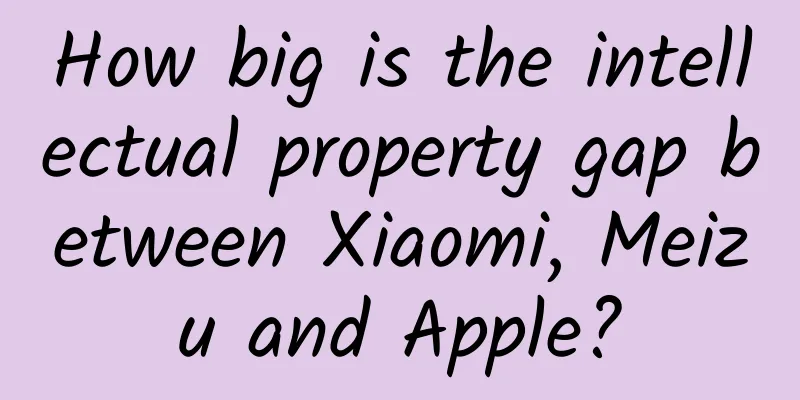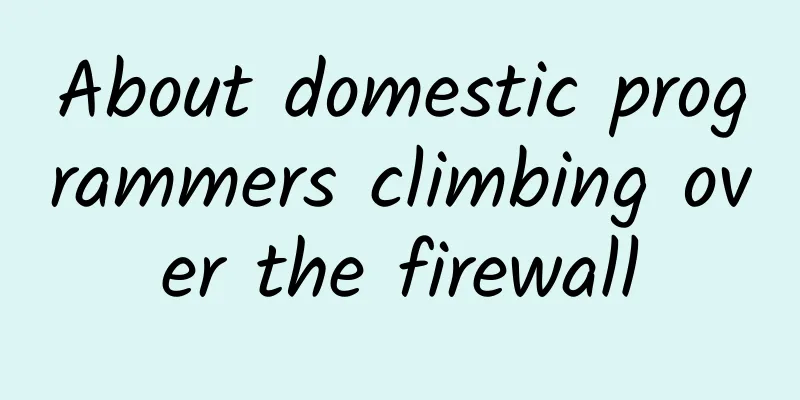How big is the intellectual property gap between Xiaomi, Meizu and Apple?

|
"You still have to have dreams. What if they come true?" Since Alibaba's successful IPO in the United States, Jack Ma's "quotations" have become a "catchphrase" for many people, especially the "heads" of startups. Not only that, other businesses under Jack Ma seem to have become "hot cakes and cakes". Recently, Meizu Mobile Phone and Alibaba Cloud OS officially "married" and launched the latest mobile phone MX4 equipped with Cloud OS 3.0 system. Some people lamented that Meizu is getting closer and closer to "Chinese Apple" and Alibaba Cloud is about to become a real "Chinese mobile phone system". Just as Jack Ma’s success cannot cover up the fact that the “Dream Theory” was not his original idea, excessive marketing hype cannot conceal Meizu’s “inadequacies” and “weaknesses” in intellectual property protection. As a representative of Chinese mobile phones that "pay tribute" to Apple, Xiaomi has been repeatedly accused by Meizu of plagiarizing or stealing its model. So the question is, how big is the intellectual property gap between Xiaomi, Meizu and Apple in China? Paying tribute or catching up with Apple, which one is more "outrageous" and "unfair"? As we all know, a sound intellectual property protection system includes traditional intellectual property rights such as copyrights, trademarks and patents, as well as "quasi-intellectual property" rights such as domain names. In terms of value, patents are undoubtedly the best indicator of the strength of a company's intellectual property. So, in the field of patent protection, as representatives of domestic mobile phones, how far behind Apple are Xiaomi and Meizu? "Tribute" to Apple: Meizu is clearly lacking in confidence According to statistics from the State Intellectual Property Office , we can see that in terms of the total number of domestic patent searches, the total number of Apple's searchable patents is twice that of Xiaomi and 24 times that of Meizu. In terms of the number of invention publications, Xiaomi is slightly higher than Apple, while Meizu is at the bottom with only 107, which is only 8% of Xiaomi and 9% of Apple. In terms of the number of invention authorizations, Apple has obtained 48 times the number of patent authorizations as Xiaomi and 120 times that of Meizu. In terms of the number of utility models, the gap between Xiaomi and Apple is not that big: Apple is only 1.8 times that of Xiaomi, but 19 times that of Meizu. In terms of appearance design, Apple is 5 times that of Xiaomi and 4.5 times that of Meizu. This is the only indicator in which Meizu is higher than Xiaomi. Perhaps this is the reason why Meizu dared to publicly accuse Xiaomi of plagiarizing appearance design? Obviously, from the perspective of patent protection, the gap between Xiaomi and Meizu and Apple is very large, among which the gap between Meizu and Apple is "outrageous". PK Xiaomi: Meizu has a lot to learn So, how do Meizu and Xiaomi perform in terms of intellectual property protection? Or, what are their respective strengths? From the above table, we can see that in terms of the number of searchable patents, Xiaomi is 8 times that of Meizu; in terms of the number of invention publications, Xiaomi is 2 times that of Meizu; and in terms of the number of utility models, Xiaomi is 10 times that of Meizu; in terms of the number of appearance designs alone, Meizu is 1.1 times that of Xiaomi. Obviously, compared with Meizu and Xiaomi, the gap between the two companies in intellectual property protection, especially patent protection, is getting bigger and bigger. This can also explain from another dimension: why Xiaomi can successfully "surpass" Meizu in the field of smartphones. Industrial and commercial registrations show that Meizu was founded on March 14, 2003, while Xiaomi was founded on March 3, 2010. In terms of the time of establishment, Meizu is nearly 7 years older than Xiaomi. However, in terms of intellectual property protection, the power comparison between the two is "upside down" or "reversed". What is the mystery behind this? From the table above, we can see that Xiaomi started to lay out its invention patents within one year of its establishment, while Meizu started to apply for them four years after its establishment. Compared with Xiaomi, Meizu has a clear gap. In terms of utility model patents, Xiaomi submitted its first utility model patent one and a half years after its establishment, while Meizu submitted its first utility model patent seven years after its establishment. Compared with Xiaomi, Meizu lags far behind. In terms of appearance design, Meizu submitted its first appearance design patent less than a year after its establishment, while Xiaomi submitted its first appearance design patent after one year and three months. Obviously, in terms of appearance design, Meizu's awareness of protection is indeed stronger than Xiaomi's, although the appearance design patent originally applied by Meizu was for MP3 devices. As we all know, among the three major patent categories, invention patents have a much longer review period, are more difficult to apply for, and have higher technical content than utility models and designs. In the competition, invention patents have the highest lethality or defensive ability. Utility models are second, and appearance designs are the worst. From the deployment of Xiaomi and Meizu in patent layout, Xiaomi pays more attention to the protection application of patents with high technological content (invention patents and utility models), while Meizu prefers appearance design protection. In other words, in terms of the two companies' intellectual property protection strategies and results, Meizu is a company that focuses on appearance design, while Xiaomi is a company that pays more attention to technological content. Fighting for the future: Intellectual property is a powerful weapon As an intangible asset, the role and value of intellectual property are significantly different at different stages of a company's development. In the initial stage of entrepreneurship (within 3 years), intellectual property protection may account for a large part of the company's costs, and at certain points in time, it may even be regarded as a "burden". Because according to the authorization cycle of intellectual property rights, a design patent takes about half a year, a utility model patent takes about one year, and an invention patent takes at least three years. For small and medium-sized enterprises, the life cycle of most enterprises is unlikely to exceed three years. Therefore, for most small and medium-sized enterprises, how to survive for more than three years while doing a good job of intellectual property protection is an art. Obviously, at this point, Meizu's first three years were no different from other small and medium-sized enterprises, while Xiaomi seemed to have more confidence and longer-term plans. Another point that needs to be emphasized is that when applying for a patent, the technical principles and implementation methods need to be disclosed in advance, which also leaves peers or latecomers with an opportunity to "plagiarize and transform". If the applicant dies before the patent is authorized, then the plagiarism of peers will be in vain. During the development and growth stage (4-10 years), intellectual property will become a powerful weapon for enterprises to overcome difficulties. Generally speaking, after more than three years, if a company has not "failed", then it should have accumulated a certain amount of users and gained a certain degree of popularity, and it can easily become a "thorn in the eyes" of its peers or a "stumbling block" for latecomers. Based on market competition, peers and latecomers will begin to use various unfair competition methods. At this time, intellectual property rights will become an "excellent weapon" for enterprises to consolidate the market, cope with competition, and restrain opponents. This can be confirmed from the global patent lawsuits between Apple and Samsung, and examples can also be found in the earlier non-smartphone market. Obviously, the appropriate intellectual property strategy should be to "hide one's strength and bide one's time" first and then "litigate to protect rights". On the premise of making good arrangements for intellectual property rights in advance, we should increase the promotion of products and services and quickly seize the market. Back to the topic, if we take Apple as our development goal, all domestic mobile phones have the opportunity to succeed, but not all domestic mobile phones have the ability to succeed. Just looking at Xiaomi and Meizu, the advantages and disadvantages of the two in terms of intellectual property protection are "clear at a glance". Who do you think has more ability or chance to succeed? As a winner of Toutiao's Qingyun Plan and Baijiahao's Bai+ Plan, the 2019 Baidu Digital Author of the Year, the Baijiahao's Most Popular Author in the Technology Field, the 2019 Sogou Technology and Culture Author, and the 2021 Baijiahao Quarterly Influential Creator, he has won many awards, including the 2013 Sohu Best Industry Media Person, the 2015 China New Media Entrepreneurship Competition Beijing Third Place, the 2015 Guangmang Experience Award, the 2015 China New Media Entrepreneurship Competition Finals Third Place, and the 2018 Baidu Dynamic Annual Powerful Celebrity. |
<<: The Living Room Conspiracy Behind Mango TV’s “WeChat Payment”
>>: Why is iPhone 6 still selling well despite being criticized?
Recommend
Known as the "giant panda" among birds, it has a "pipa face"...
The Black-faced Spoonbill is a wading bird with a...
Just 2 steps to permanently turn off Win10 automatic updates
It's not that Windows 10 is bad, but Microsoft...
Android multi-threaded breakpoint download
Source code introduction Implement multi-threaded...
Make friends with e-commerce academy · Get started with live streaming with zero basics, and learn how to become a live streaming anchor
Make friends with e-commerce academy. Get started...
Lao Luo’s first Douyin show, 4,000 words you must read about live streaming!
Lao Luo is on the hot list again, returning to hi...
14 frequently asked questions about childhood influenza, answered by experts from Beijing Children's Hospital!
Respiratory diseases are common in children in wi...
Advertising Cases | Traditional lending and driving test industry advertising cases and data references!
Today, I would like to share with you some invest...
Plastics delivery of the week: New technologies help protect the environment by “trampling” industrial waste gas and making vodka out of “air”
#1 "Step on" industrial waste gas: Carb...
Marketing promotion plan: Why can’t you always write a good plan?
Why do many friends always fail to write good pro...
Be alert! A case of plague has been confirmed in a place in China, and the condition is critical!
Ningxia reported in the early morning: A case of ...
How difficult is it to prevent floods in the Yangtze River?
↑A group of National Geographic fans, focusing on...
A quick overview of the history of computers
Part 01 introduction The history of computer deve...
What exactly made snail noodles smell bad?
Mixed Knowledge Specially designed to cure confus...
Cold wave + strong wind + sandstorm! If you are preparing to start work, please take these precautions!
1Cold wave orange warning! The Central Meteorolog...
How much does it cost to make a Zaozhuang takeaway mini program? Zaozhuang takeaway applet production price inquiry
There is no fixed price for the production of Zao...

![2020 Zero-cost Money-Making Strategy, Even a Newbie Can Make 200+ a Day [Video Tutorial]](/upload/images/67cc3794aaf4d.webp)







